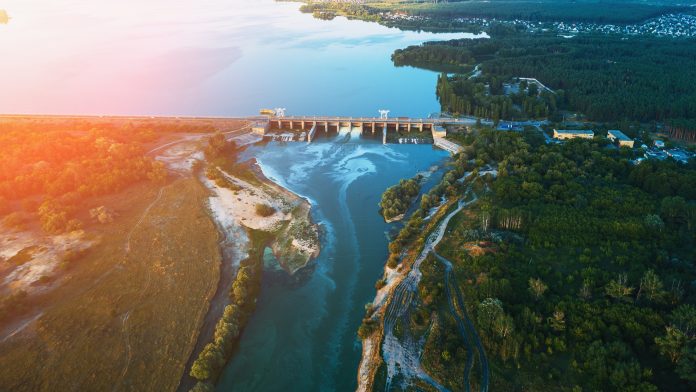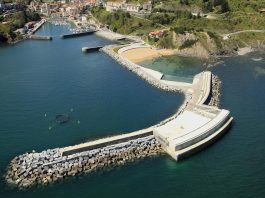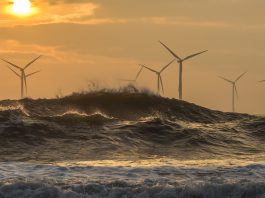The Free Flow turbine from FishFlow Innovation harvests sustainable hydro power from tidal and river current in a fish-friendly and highly efficient manner.
In the midst of the energy transition, hydro power is, by far, the largest source of renewable energy and has by no means reached its total capacity. However, one of the disadvantages hydro power faces is the disturbance of marine life on the target location, especially fish mortality. For these reasons, FishFlow Innovations developed the Free Flow turbine which harvests river or tidal energy while being 100% fish-friendly. Furthermore, it does not disturb the marine ecosystem while generating a high yield.
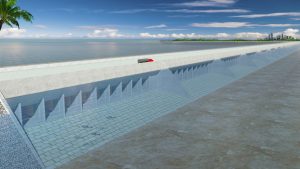
The benefits and drawbacks of hydro power
One of the great benefits of hydro power, besides its renewable nature, is its reliability. It is by far the most reliable source of energy. Tidal and river flows are usually known in advance, which ensures clarity about the amount of energy to be generated.
However, in order to utilise the vast majority of hydro energy a river or tidal zone must be dammed or partially blocked. This prevents fish in their natural migration and may also damage or potential kill them if they swim trough the turbine. In addition, the noise of the turbines due to high rotation speeds and cavitation combining with turbulent water outflow disturbs the local marine ecosystem.
The Free Flow turbine design combines these advantages while it avoids the disadvantages
Due to the revolutionary and patented design of FishFlow Innovations’ Free Flow turbine, the advantages of hydro energy are combined without the said disadvantages. This is owning to the fact that the width of the impeller is gradually increased from the outside inwards in the first and last winding. This ensures that the water, and the fish, flow straight in and out without being affected by the gradually increasing impeller, regardless of the impeller’s speed. The shape also ensures that no noise or cavitation occurs, which is a highly underestimated harm to marine life.
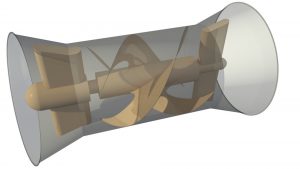
In addition, the turbine is highly efficient due the bi-directionality of the impeller and its shape. This will also be less likely to malfunction, cheaper to build, and require less maintenance than alternative designs.
Furthermore, installation of the turbine is simple, inexpensive, and will not harm local ecosystems. This is due to the hollow casing, the buoyancy of which can be controlled by the ratio of water to air present in the housing. The ratio can be adapted with a pump, which also ensures that maintenance can be performed easily above water. A solid concrete casing around a steel frame is also possible and, as a consequence, no anchoring on the seabed will be necessary while the turbine remains storm proof.
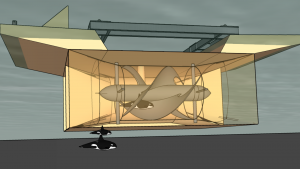
Yield, profitability and lifespan
A turbine with ø 8m at 2m/s water velocity will produce approximately 2.1 GWh/yr. As a result, a 15% more efficient energy yield is attained over mainstream alternatives. This thereby ensures a payback period of less than 10 years. With a lifetime expectancy of 50 years, sufficient profit can be made without harming the environment. The turbine is made from GRP composite and can withstand the sea climate well. If the turbine needs to be replaced, a 95% recycling rate is achieved.
Implementation
The Free Flow turbine can be installed inshore in river currents, and offshore in tidal currents. Because of its environmentally friendliness, it is possible to install the turbine as a stand-alone structure. However, implementing the turbine in a construction design, for example a bridge, is also feasible due to being robust and durable while also combining the functions into a single design.
Other products
FishFlow Innovation have also developed a fish-friendly Archimedes’ screw pump and turbine. This is a bi-directional encased screw and is capable of pumping water across a desired height difference or generating energy by letting water flow through it. This is particularly useful for controlling water levels within a polder, harnessing the height difference energy of water, or creating an energy storage lake. The hydraulic efficiency is 80-100%, whilst also being fish-friendly. Furthermore, it has an 80 year life time expectancy as well as almost no maintenance costs.
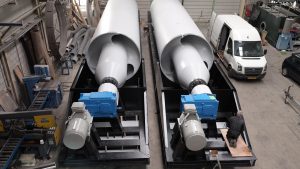
Please note, this article will also appear in the seventh edition of our quarterly publication.

